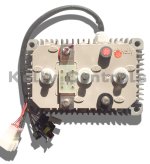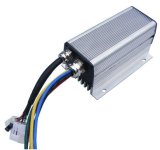Braddudya
100 W
- Joined
- Jan 30, 2022
- Messages
- 140
I am looking to upgrade a controller for a 3-5kW pitbike project. Kelly has a good reputation and seem quite usable as well as affordable. I am leaning toward the sinusoidal controllers as they promise to run smoother and are similarly priced.
I'm looking at the KLS-N 72V 80A continuous $129

And the KLS-S 72V 80A continuous $199

I've looked over the spec sheets but I want to be certain I am not missing anything. Is the main difference just the size? Size isn't that big of a deal to me as I am currently using a gigantic no-name controller. It seems like the KLS-N is not only lower cost but also more robust considering the 200A bust is rated for 50% longer than the KLS-S.
Thoughts?
edit: Also is the can bus option worth it? I have never utilized one for a project before.
I'm looking at the KLS-N 72V 80A continuous $129

And the KLS-S 72V 80A continuous $199

I've looked over the spec sheets but I want to be certain I am not missing anything. Is the main difference just the size? Size isn't that big of a deal to me as I am currently using a gigantic no-name controller. It seems like the KLS-N is not only lower cost but also more robust considering the 200A bust is rated for 50% longer than the KLS-S.
Thoughts?
edit: Also is the can bus option worth it? I have never utilized one for a project before.

